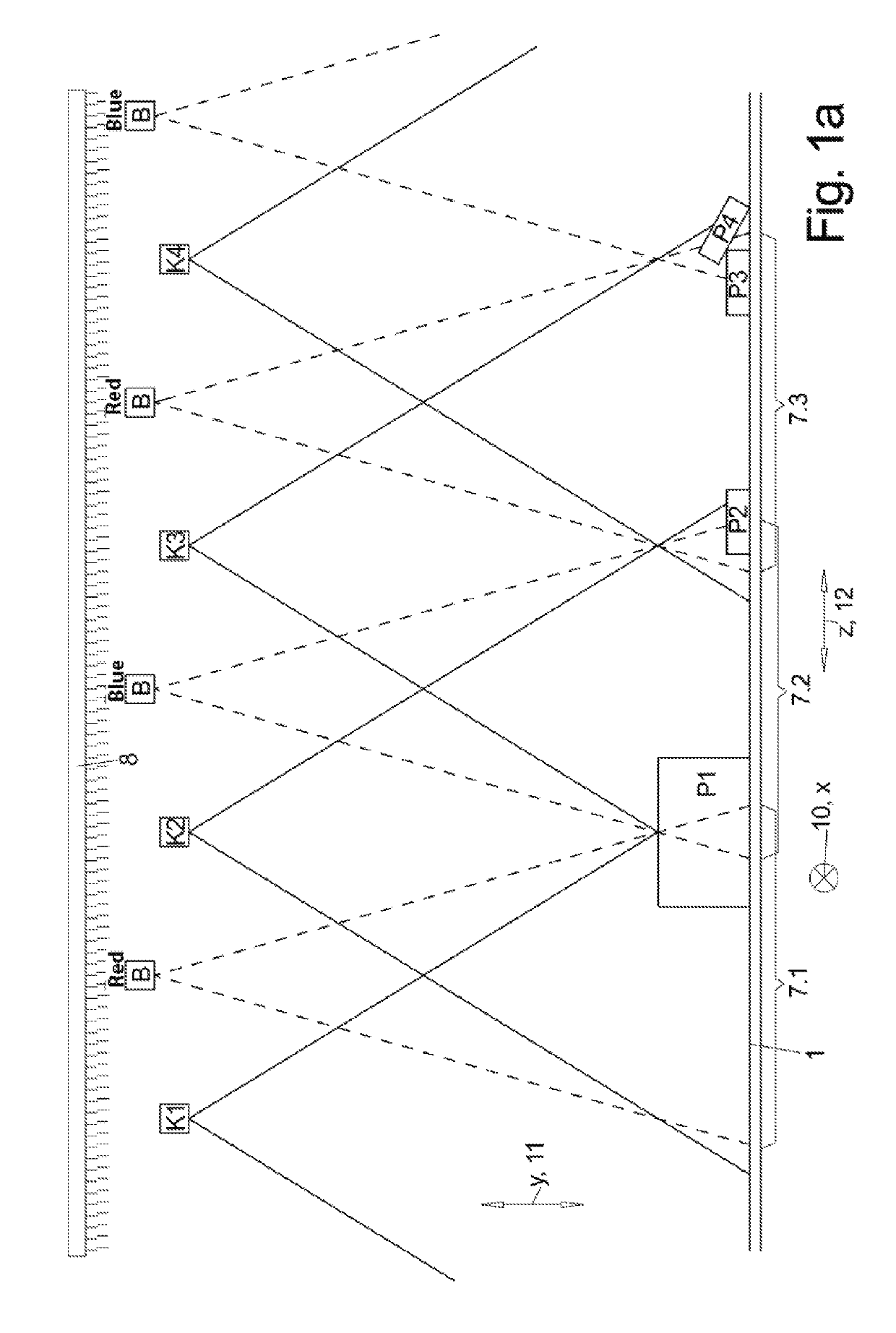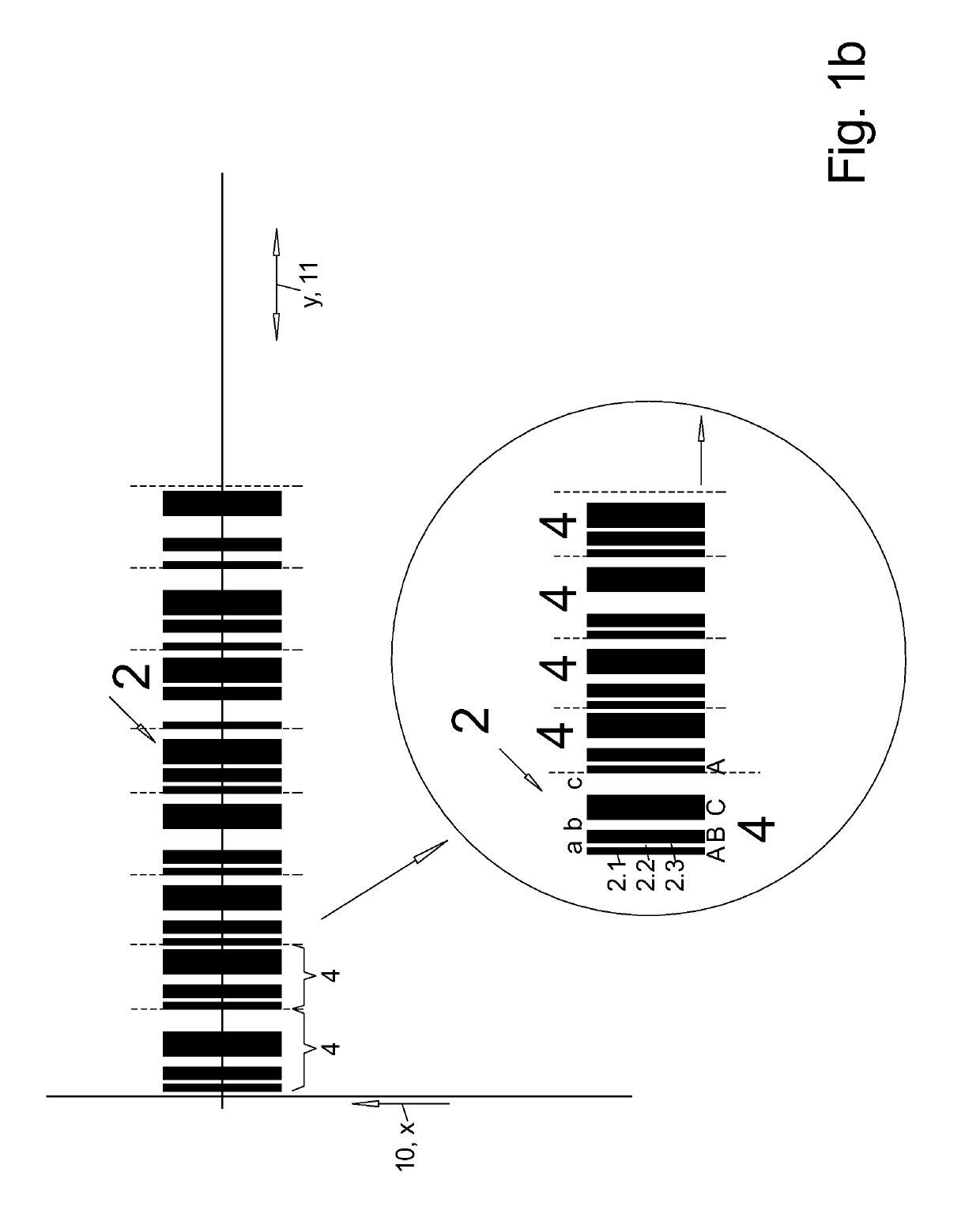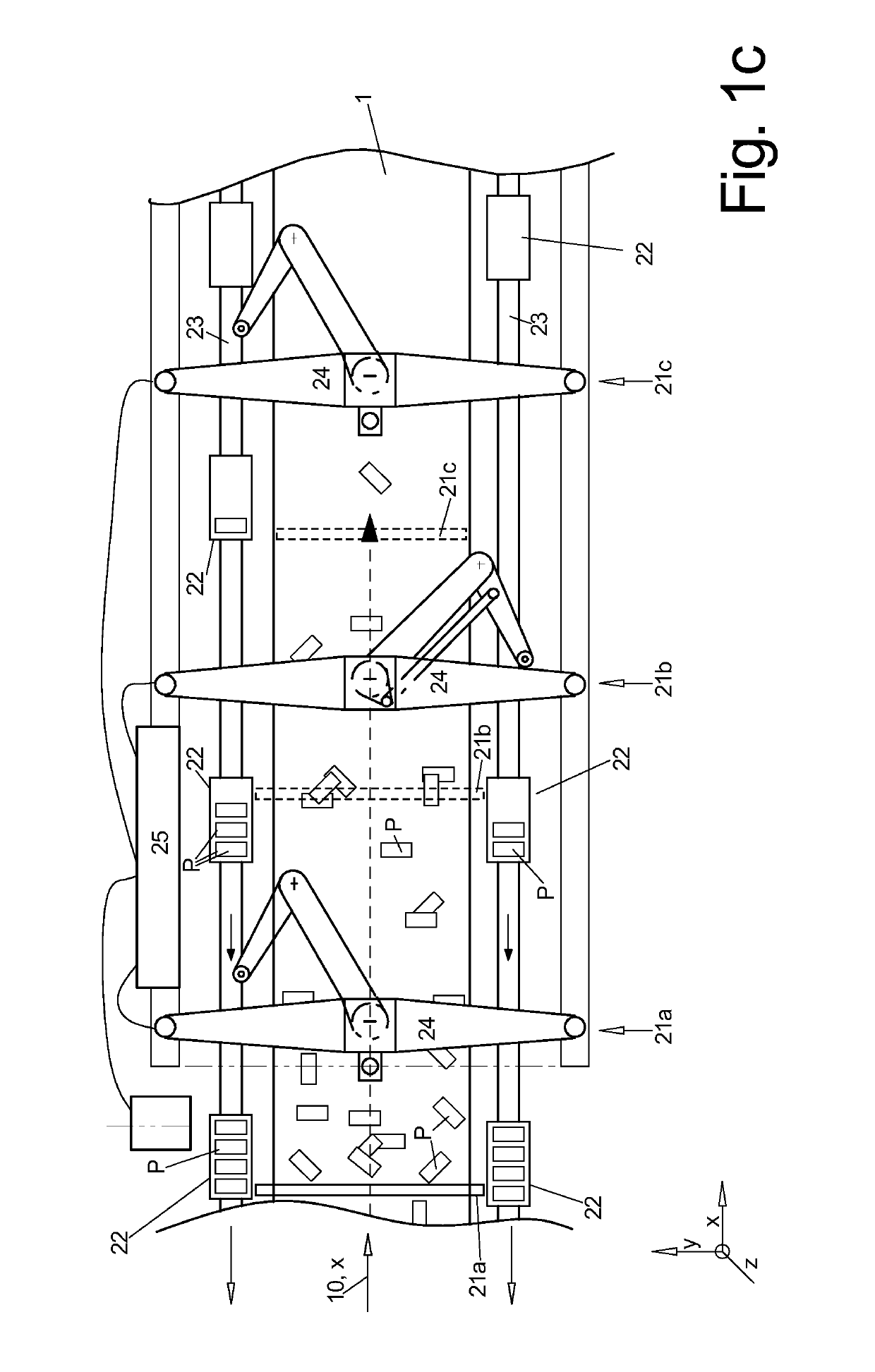Method and scanner for touch free determination of a position and 3-dimensional shape of products on a running surface
a technology of product applied in the direction of measuring devices, instruments, electrical equipment, etc., can solve the problems of uneven product distribution on the running surface, and inability to detect the position and 3-dimensional shape of products
- Summary
- Abstract
- Description
- Claims
- Application Information
AI Technical Summary
Benefits of technology
Problems solved by technology
Method used
Image
Examples
embodiments
[0058]Embodiments according to the invention are subsequently described in more detail, wherein
[0059]FIG. 1a: illustrates the scanner viewed in running direction of the surface;
[0060]FIG. 1b: illustrates a top view of the surface with a pattern radiated on;
[0061]FIG. 1c: illustrates a typical application of the device according to the invention;
[0062]FIG. 2: illustrates a detail of FIG. 1a with a differently shaped product;
[0063]FIG. 3a: illustrates a strip image of a vertical lateral surface of a product; and
[0064]FIG. 3b: illustrates a strip image for a convex cambered product.
[0065]FIG. 1c illustrates a typical application for the line scanner 20 according to the invention.
[0066]This is a top view of a so-called picker line which delivers unevenly distributed products through a transport band 1 moving in running direction X, 10 wherein the products are individually gripped by pickers 21a, b, c arranged in sequence above the transport band 1 in operating direction, and wherein the...
PUM
 Login to View More
Login to View More Abstract
Description
Claims
Application Information
 Login to View More
Login to View More - R&D
- Intellectual Property
- Life Sciences
- Materials
- Tech Scout
- Unparalleled Data Quality
- Higher Quality Content
- 60% Fewer Hallucinations
Browse by: Latest US Patents, China's latest patents, Technical Efficacy Thesaurus, Application Domain, Technology Topic, Popular Technical Reports.
© 2025 PatSnap. All rights reserved.Legal|Privacy policy|Modern Slavery Act Transparency Statement|Sitemap|About US| Contact US: help@patsnap.com



